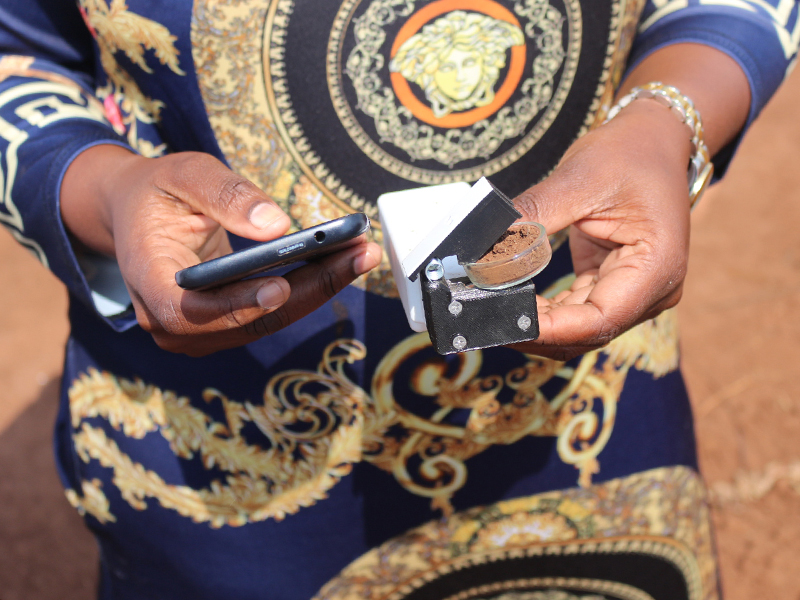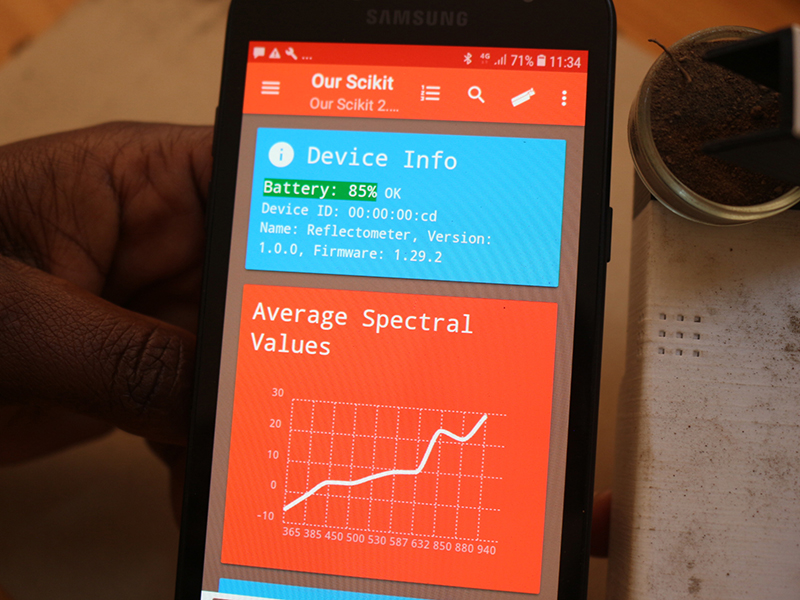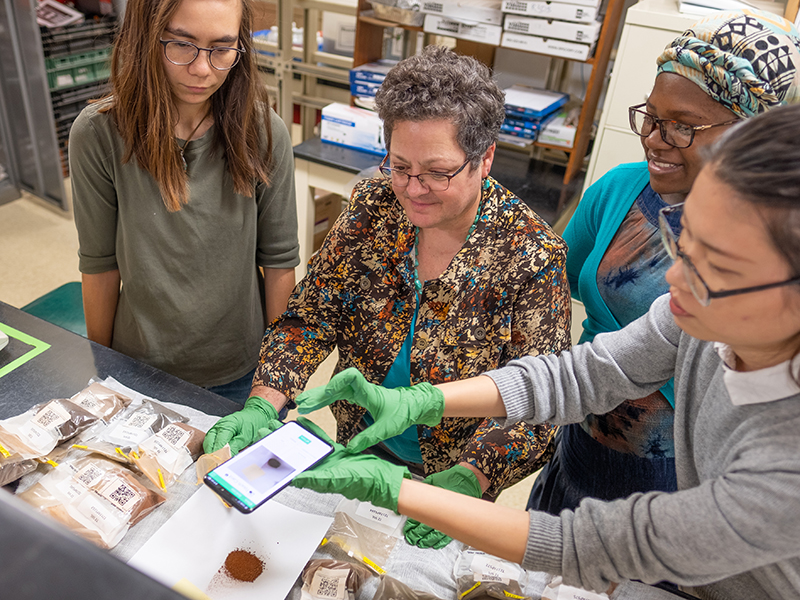Improving soil carbon measurements empowers African farmers
August 16, 2021 - Susan V. Fisk
The amount of carbon in farm soils is important to farmers. Soils with high carbon contents tend to provide better yields. They also tend to have more resilience to weather-related crop failure. But measuring the amount of carbon in soil can be expensive and involve several steps. That can make it hard to collect this critical information in regions like sub-Saharan Africa.

Sieglinde Snapp, a fellow of the Soil Science Society of America, has been working with African farmers to improve growing conditions and provide better measurements for several decades. She and her colleagues recently published a paper in Soil Science Society of America Journal about a device they’ve tested that provides inexpensive, fast and accurate soil carbon measurements.
“Soil organic carbon varies at fine scales across fields,” says Snapp. “Farmers require detailed information to better understand how crops will respond to nutrients and water management. Both processes are regulated by soil organic carbon.”
“In sub-Sarahan Africa, typical farm sizes are under one hectare (about 2.5 acres),” says Snapp. These are called smallholder farms. They are also often divided further across numerous, smaller fields.
“Soils in this region vary greatly in characteristics,” says Snapp. “Their fertility is highly sensitive to management.” Many farms have degraded soils and are being managed by farmers with limited resources. “This can cause unstable food supplies in the region. Restoring the soils’ productivity through management that increases soil carbon is a major policy goal.”

The research team looked for ways to help farmers assess their soil carbon in a quick, inexpensive way. They evaluated a low-cost portable “reflectometer.” The reflectometer the team evaluated collects infrared reflectance at ten wavelengths, which allows a hardware cost of $400. For comparison, a highly accurate laboratory method can require an investment of over $100,000 for equipment.
They calibrated this device with lab tests to verify the data they collected.
“We found that the reflectometer predicted soil carbon levels precisely,” says Snapp. “It gave sufficient accuracy to inform soil management practices. What is unique about this handheld sensor is that the provides the data directly in the field, in the absence of a good phone connection.”

“With minimal training, extension staff can use the reflectometer to carry out assessment of soil carbon in real time with farmers in their field,” says Snapp. “This represents a significant step forward in improving agronomic management in data-poor locations. Access to such immediate and locally relevant soil data can empower Malawian farmers to make more informed management decisions based on their unique contexts.”
Future research will focus on calibrating the device for different regions, or different sampling techniques. The team may also look at incorporating qualitative information collected by farmers and on improving measurements with machine learning.
“We expect that as these tools become even more reliable and accessible, farmers will be better able to make informed management decisions. Policy can be more responsive to on-the-ground needs, with the ultimate outcome of improved livelihoods and improved food security.
Snapp is a professor at Michigan State University. This study was funded by the United States Agency for International Development Grant AID-OAA-A-13-00006, as part of the Feed the Future Initiative project Africa Research in Sustainable Intensification for the Next Generation with support from the International Institute of Tropical Agriculture. The research was also supported through a Michigan State University contract under International Fertilizer Development Center and USAID under the Prime Agreement No. AID-BFS-IO-15-00001.
